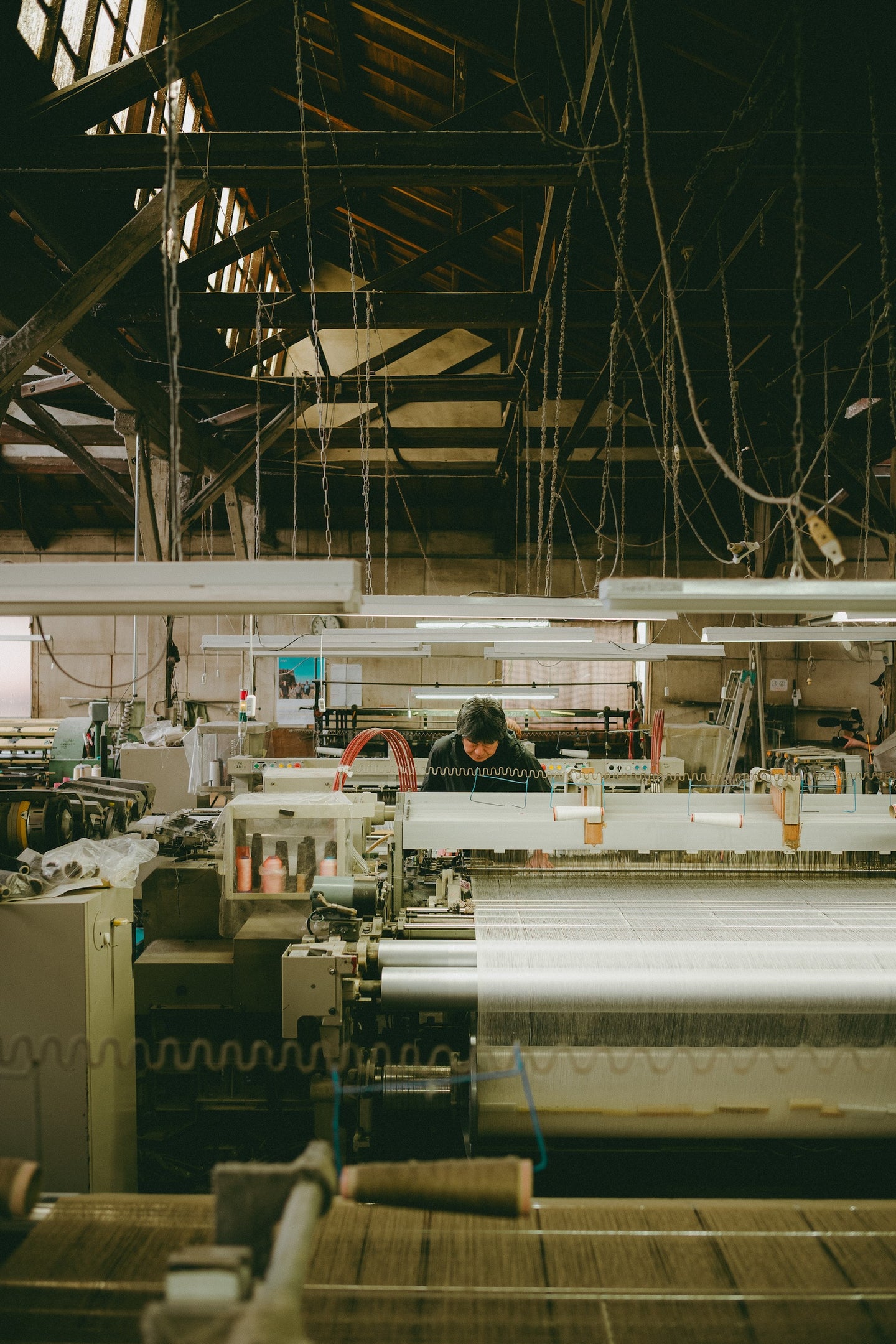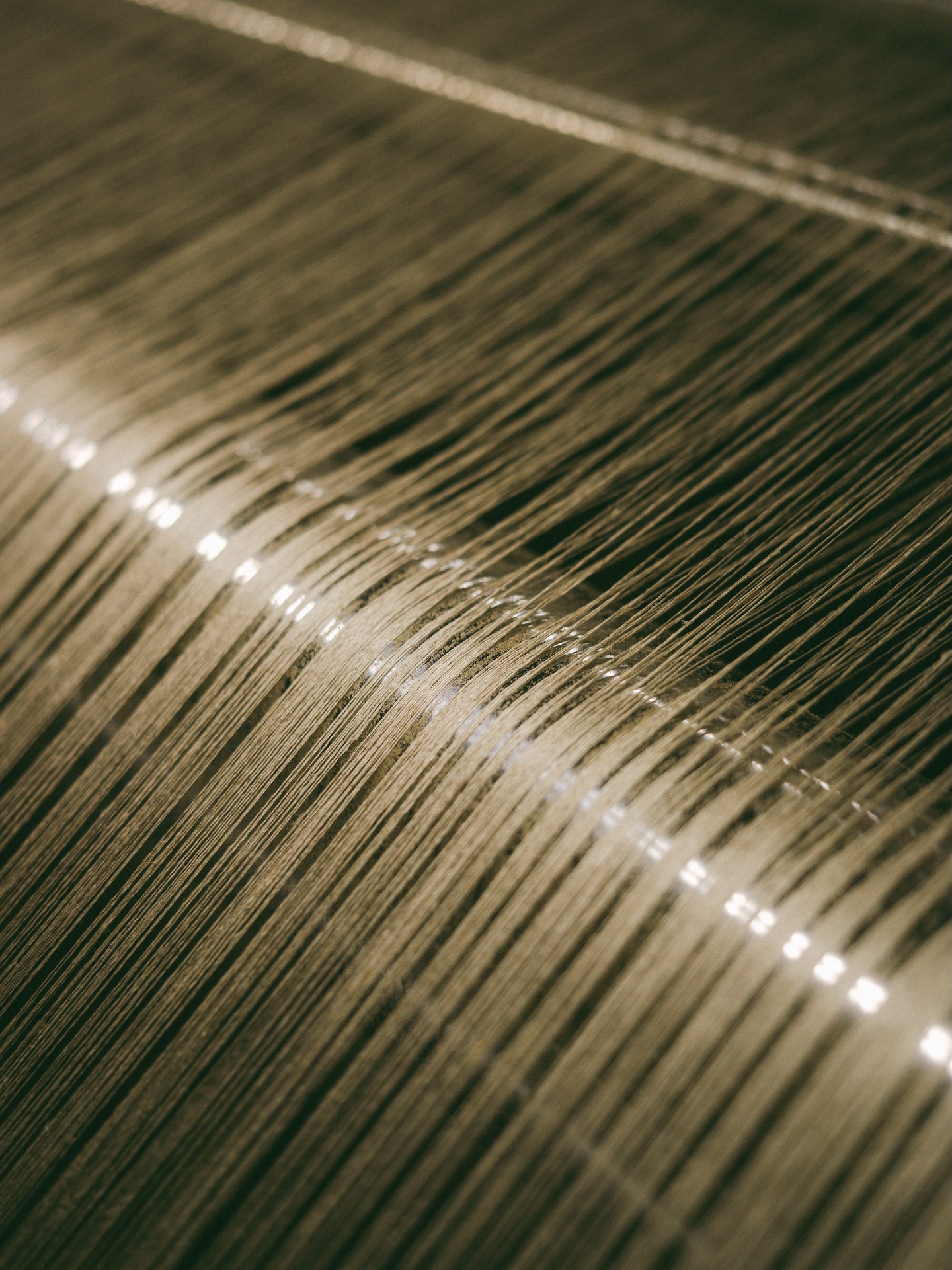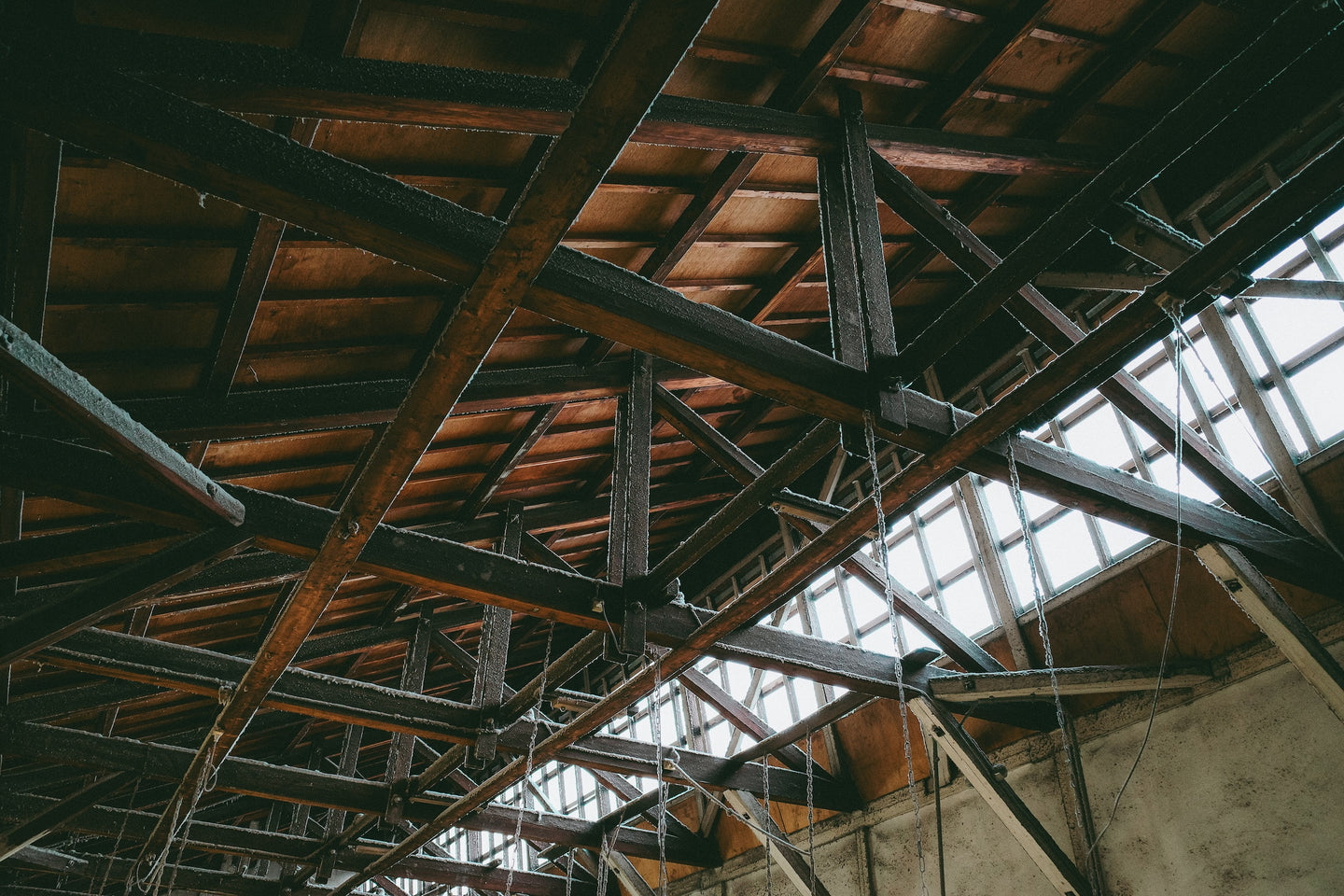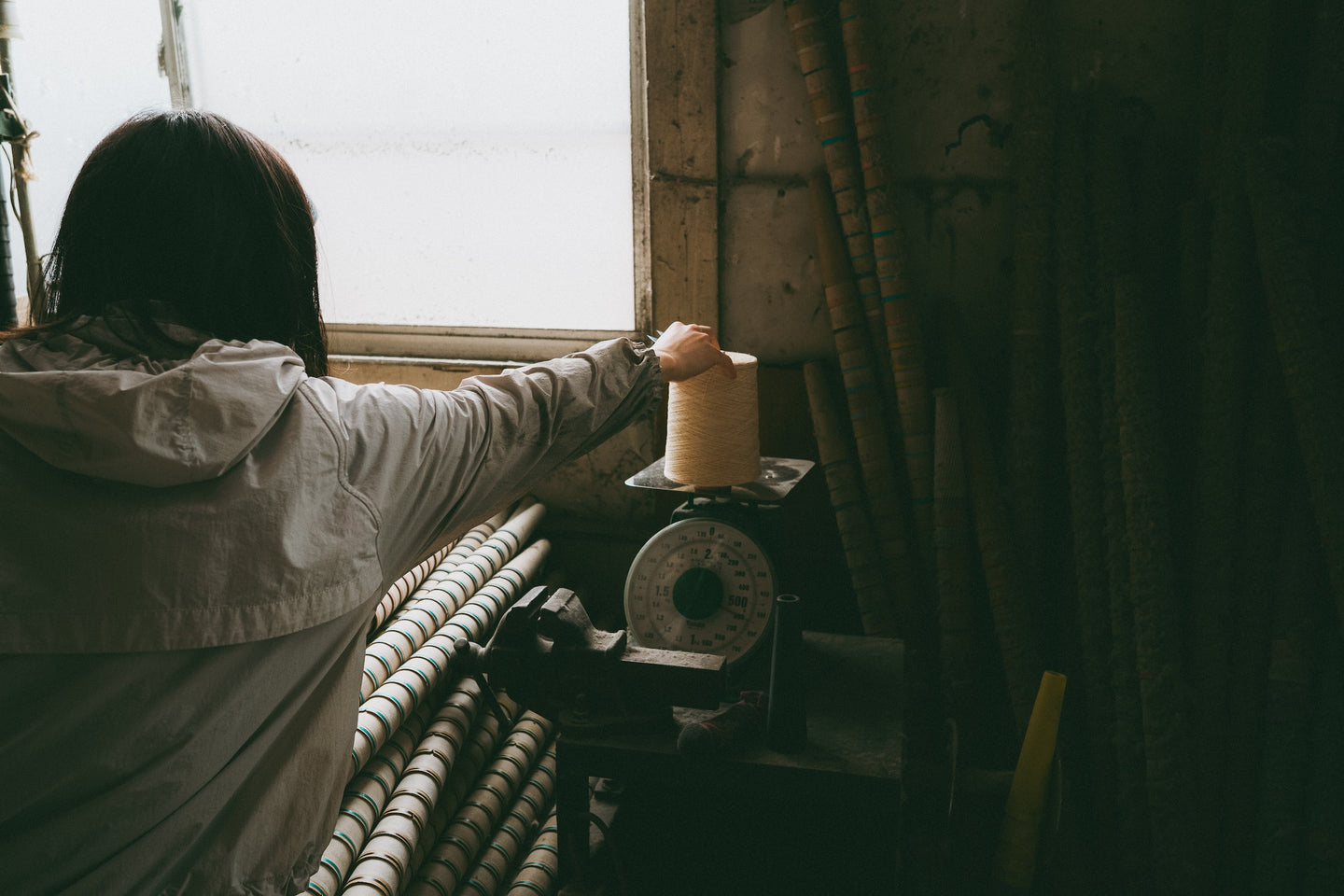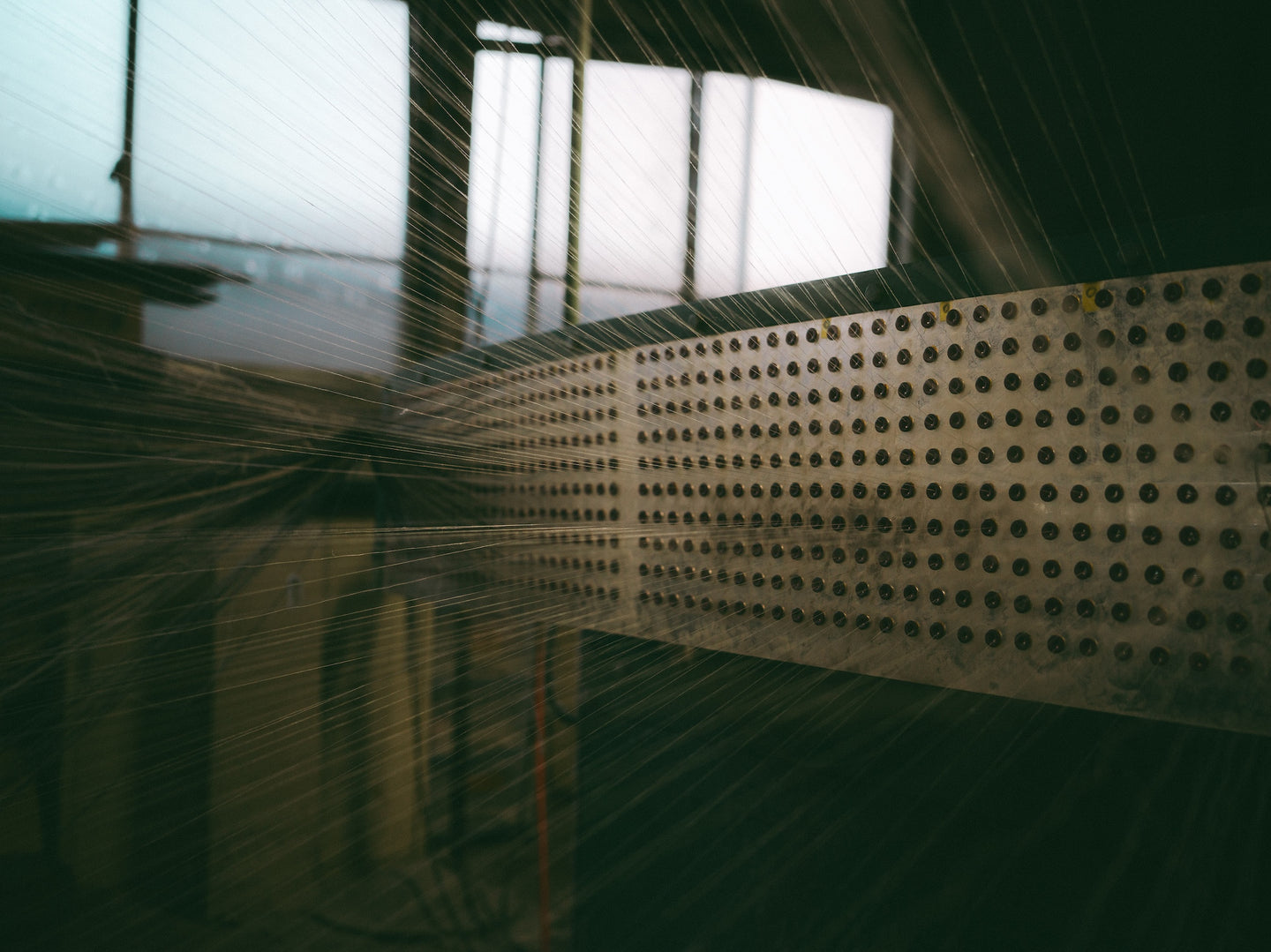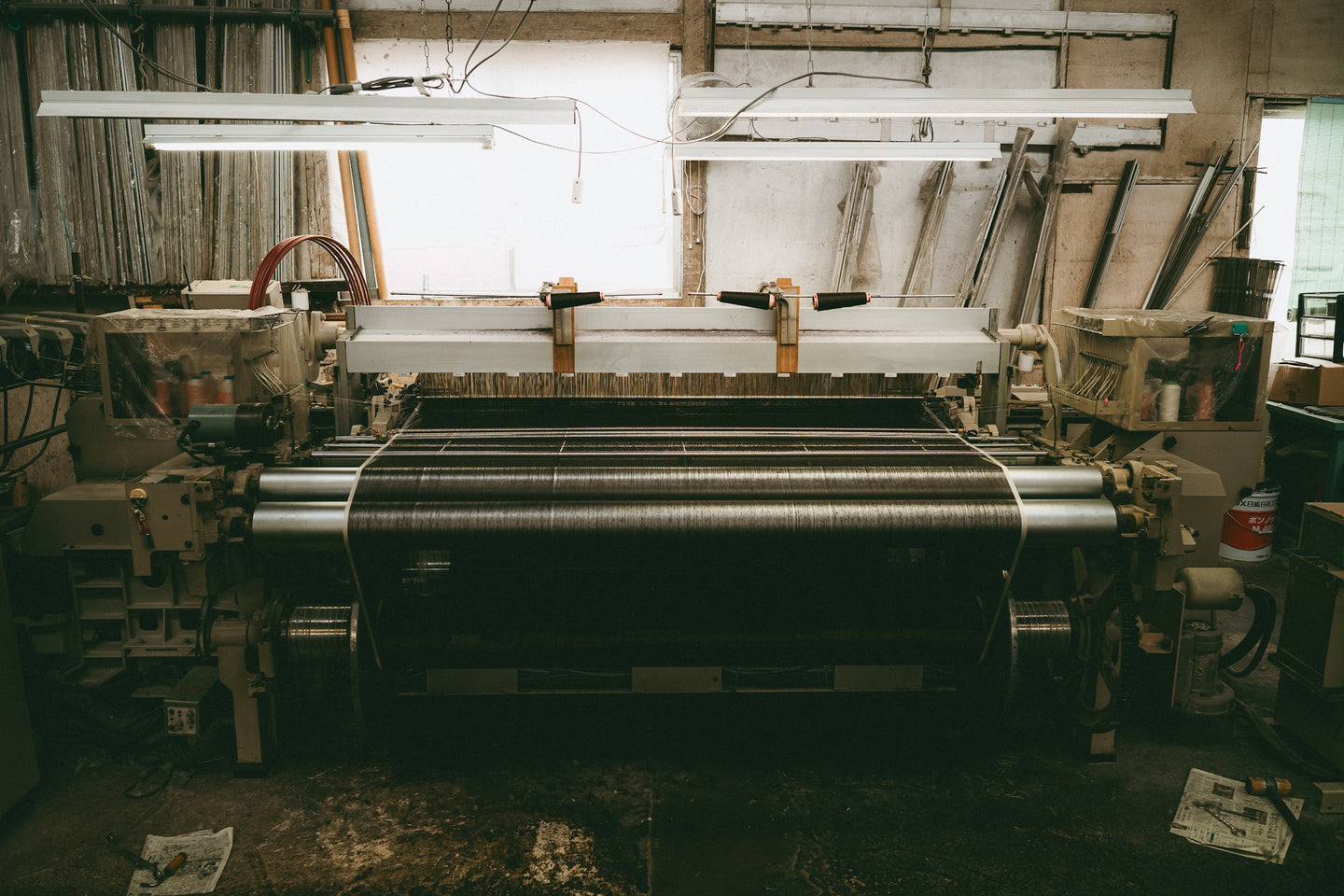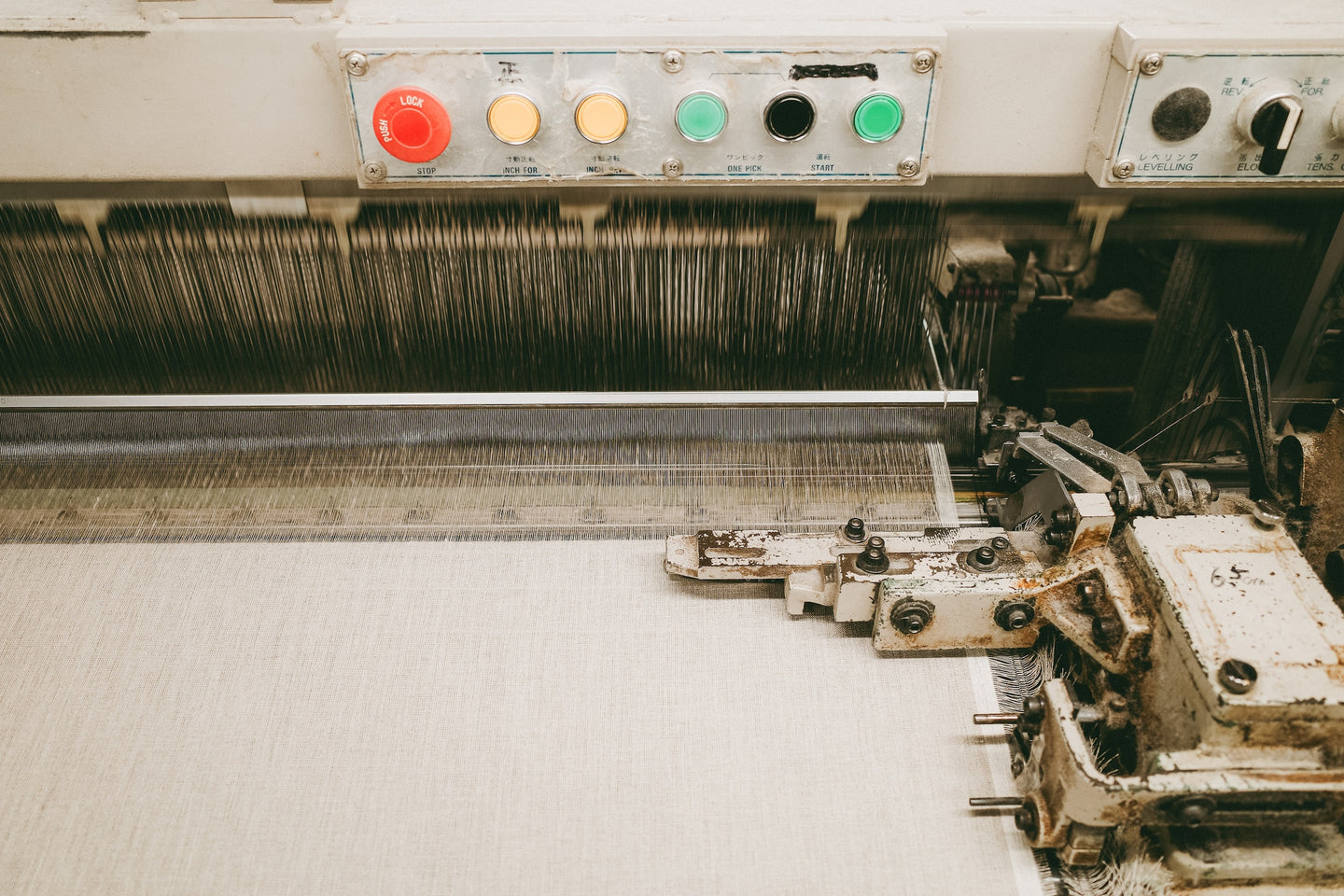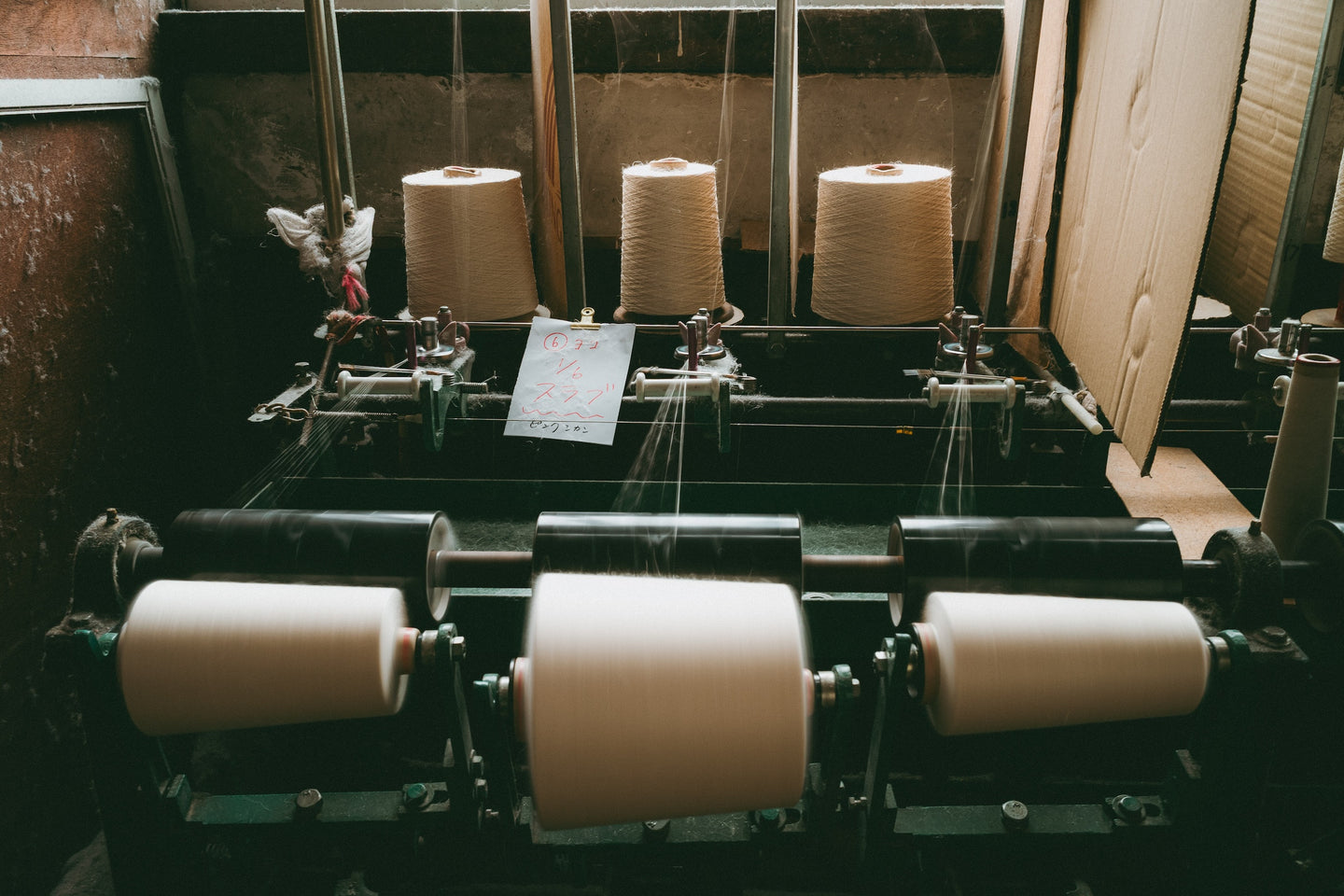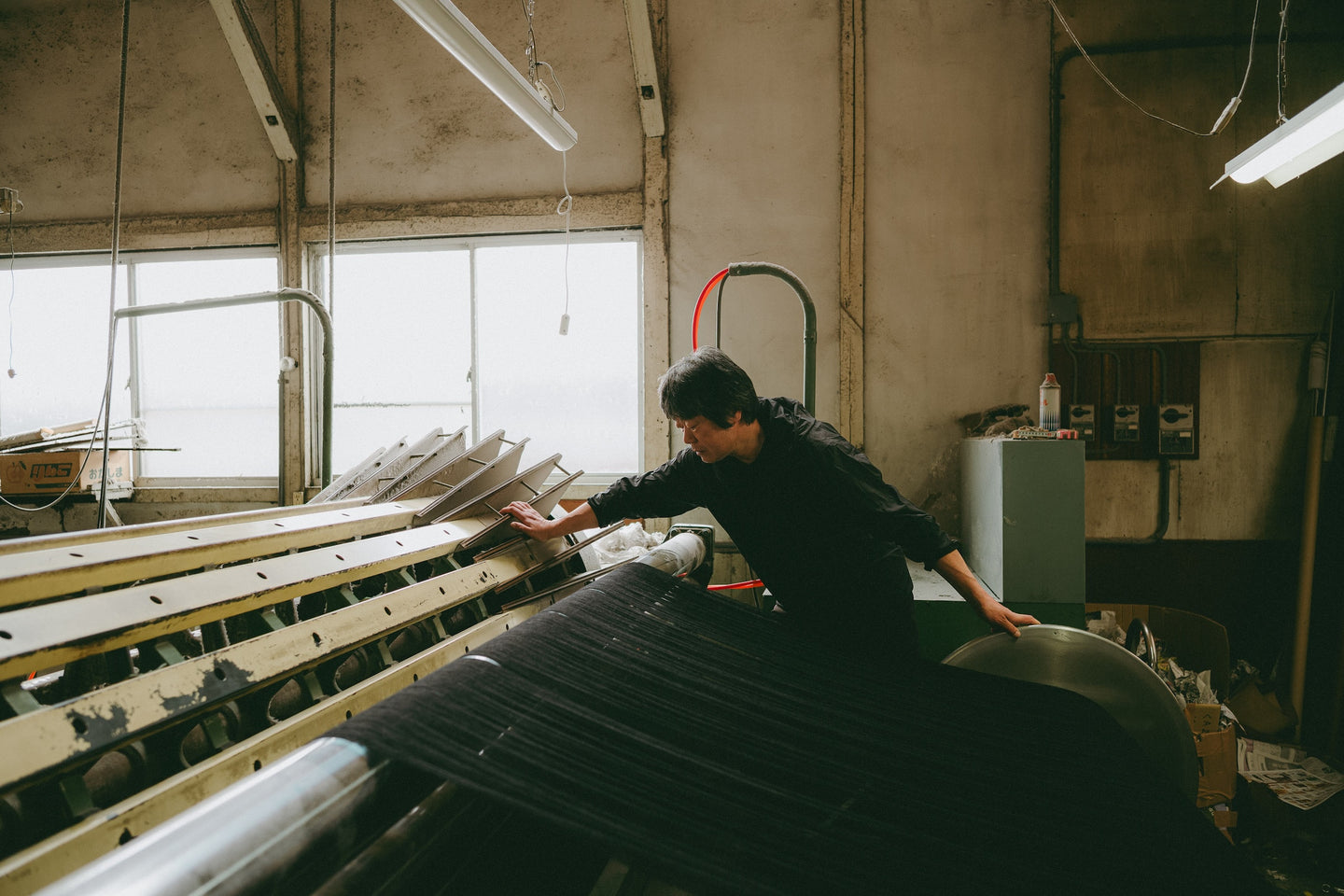
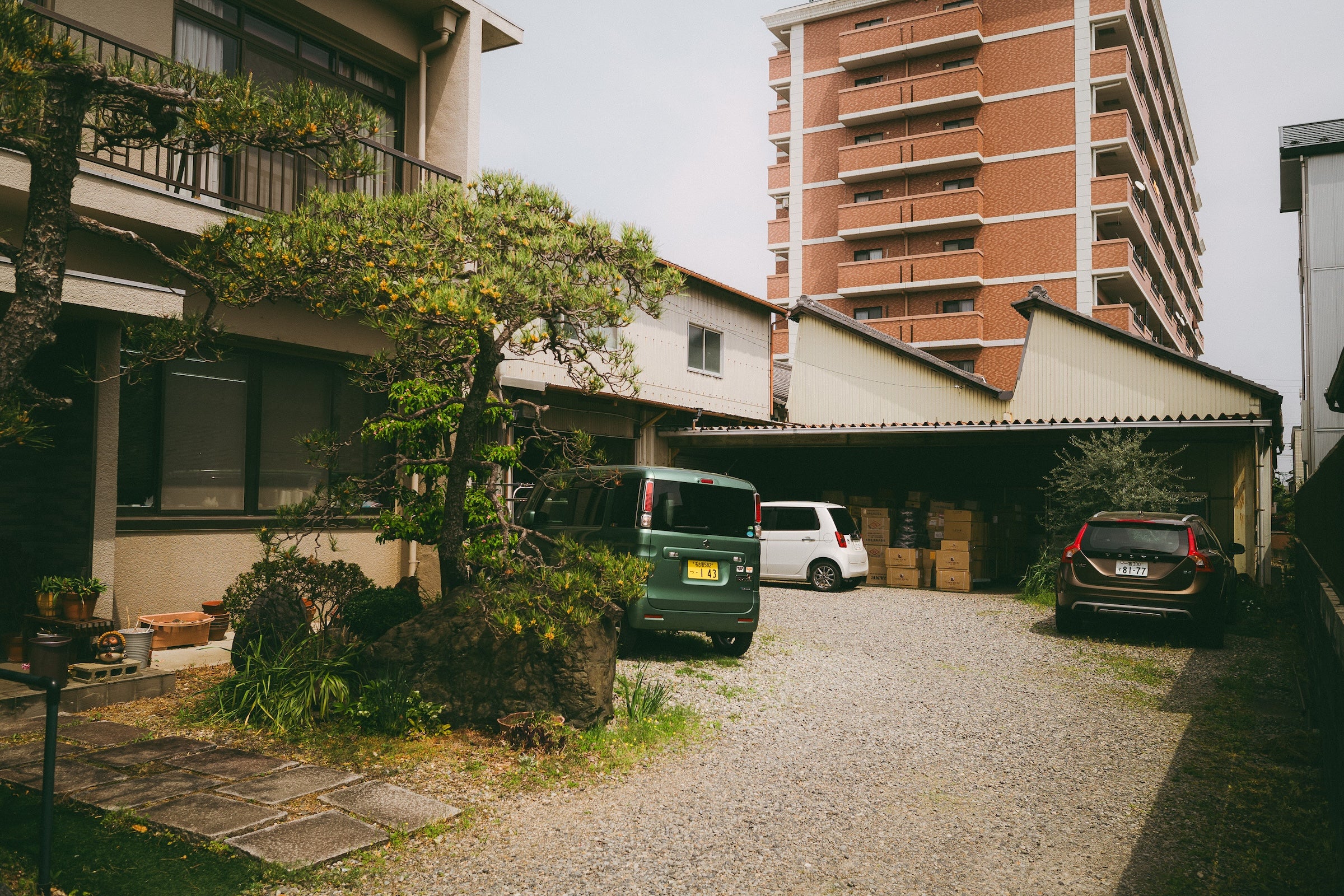
Sometimes it seems the incessant commercialization of our time stands diametrically opposed to the existence of small scale, family run businesses - especially those rooted in craft, generational knowledge and the making of something tactile. Whether it's furniture, tableware, shoes or textiles, there is something really special and fleeting about this intimate scale of industry - where it seems more common to encounter a high degree of dignity, pride and satisfaction in work and creation.
This third generation weaving mill, run by Akiko, her husband Hiroyasu and their two employees - crafts excellent textiles in the workshop that stands just a few feet from their home. Founded in 1949 by Hiroyasu's grandfather, this micro mill has fewer than a dozen power looms but notably features an in-house warping setup. Without getting overly technical - the ability to wind a warp in-house has profound implications on the variety and quantities that a mill can weave. This unique capability happens to be a defining feature of the weaving operations based in this area, historically known as Bishu, encompassing Ichinomiya and the surrounding towns.

In Japan, like many parts of the world, it’s common to have a regional specialty that can be more singular or narrow in scope - like the weaving of denim or canvas in Okayama or the weaving of woolen tweeds in County Donegal. The opposite is true for Bishu, where the specialty is that of variety, of making many different types of cloth well and working with all of the different natural fibers as opposed to just focusing on one. Importantly for what we do, they also tend to be smaller operations, which means they are often able to weave very unique cloth at more approachable quantities for a fellow small business.
Not only is there inspiration to be found in observing the process - it also reveals how weaving is truly a collaboration between human and machine. It seems increasingly important to point out rather bluntly that these fabrics are not spat out of a 3D printer - their creation relies heavily on the human hand, eye and knowledge.

